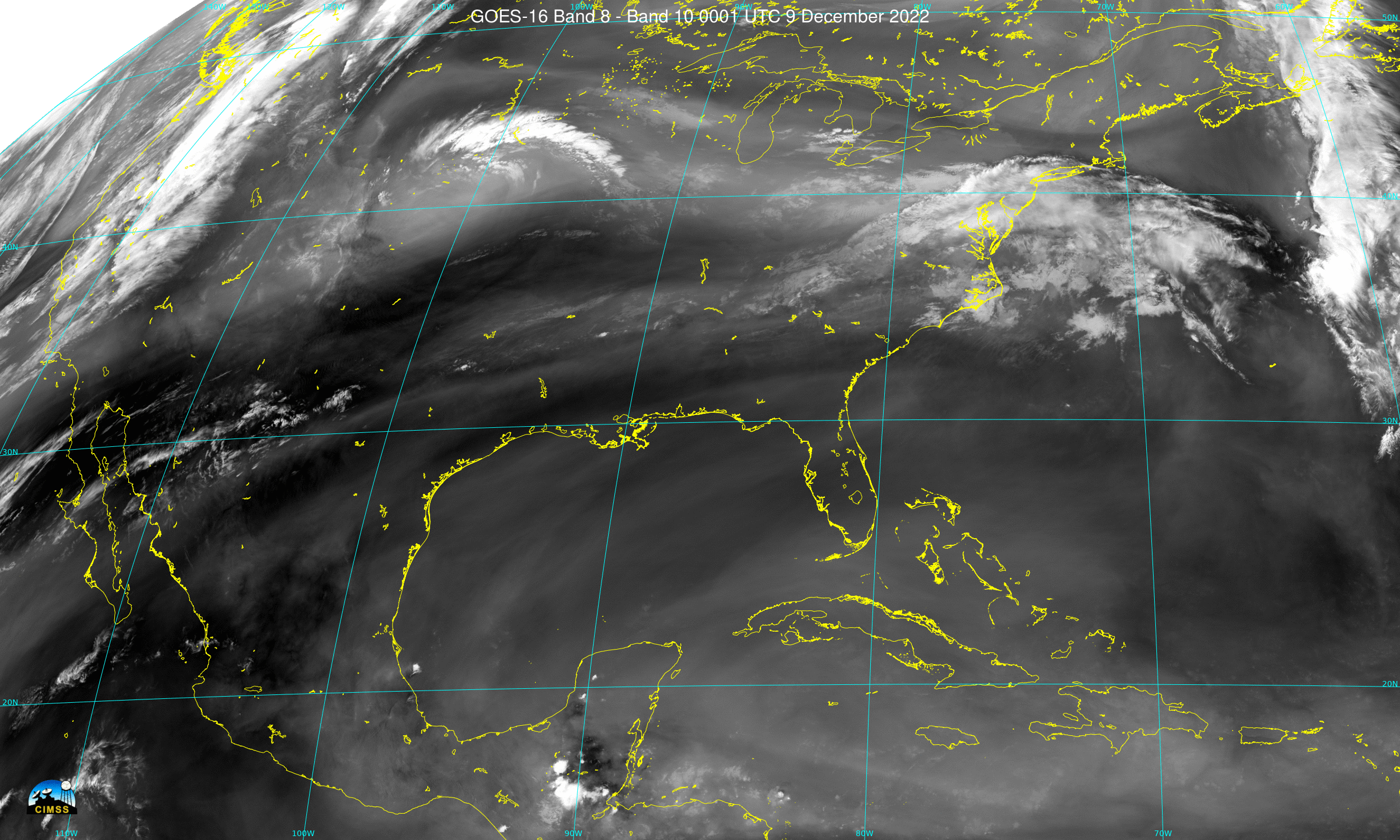How to make Brightness Temperature Difference fields with Geo2grid

Previous blog posts have documented how to display imagery using geo2grid, and how to create new RGB products. (Note: geo2grid v1.1 is now available at this link) This blog post will detail the steps needed to create a brightness temperature difference field. For that to occur, information must be entered into these two files within the geo2grid file structure: $GEO2GRID_HOME/libexec/python_runtime/etc/polar2grid/enhancements/abi.yaml and $GEO2GRID_HOME/libexec/python_runtime/etc/polar2grid/composites/abi.yaml. For this example, I created a Water Vapor Brightness temperature difference field (named ‘wvdif’), as used with the airmass RGB (Here’s a Quick Guide for that RGB). The information added to the $GEO2GRID_HOME/libexec/python_runtime/etc/polar2grid/composites directory in the abi.yaml file (defining the bands used to create the product) is shown below. Indentations are important here; the ‘wvdif’ line is indented two spaces! In plain language, Band 10 (low level water vapor, 7.3 µm) is subtracted from Band 8 (upper level water vapor (6.19 µm).
wvdif:
compositor: !!python/name:satpy.composites.DifferenceCompositor
prerequisites:
- name: C08
- name: C10
standard_name: wvdifInformation added to abi.yaml file in the $GEO2GRID_HOME/libexec/python_runtime/etc/polar2grid/enhancements directory (indentations are important here; the ‘wvdif’ line is indented two spaces) is shown below. This gives the range of values that are of interest; in the RGB, values of the Water Vapor Brightness Temperature difference range from -26.2oC to 0.6oC. Note that ‘max_stretch’ and ‘min_stretch’ correspond to values with the greatest and smallest, respectively, amounts of red in the RGB.
wvdif:
standard_name: wvdif
operations:
- name: stretch
method: !!python/name:satpy.enhancements.stretch
kwargs:
stretch: crude
min_stretch: -26.2
max_stretch: 0.6
The geo2grid software calls that creates the temperature difference field, and color-enhances it, and applies coastlines and a latitude/longitude grid are shown below (this geo2grid call also makes the airmass RGB, the RGB that uses the water vapor difference field as the red component of the RGB). Note that because a color bar is not added by the add_coastlines.sh script (as discussed in this blog post), multiple .tif files can be referenced.
$GEO2GRID_HOME/bin/geo2grid.sh -r abi_l1b -w geotiff -p airmass wvdif -f /path/to/ABIdata/L1b/RadC/*s20223430001*
$GEO2GRID_HOME/bin/add_colormap.sh /path/to/enhancements/Red1.txt GOES-16_ABI_RadC_C13_20221209_000117_GOES-East.tif
$GEO2GRID_HOME/bin/add_coastlines.sh --add-coastlines --coastlines-resolution f --coastlines-level 5 --add-grid --grid-D 10.0 10.0 --grid-d 10. 10. --grid-text-size 14 *1209_0001*.tifThe animation at the top shows the airmass RGB, the greyscaled water vapor difference field, and the water vapor difference field enhanced to show how much red will be in the airmass RGB.

